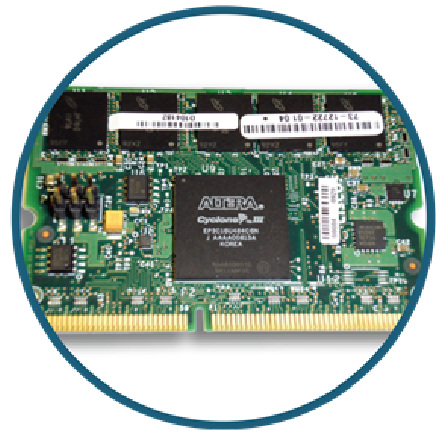Custom Solutions
SDRAM Application: PC133 SDR SODIMM End-of-life Part Replacement Requirement
Requirement
A high volume electronics manufacturer required a drop-in part replacement upgrade for an end-of-life PC133, ECC registered SDR 144-pin SO-DIMM. The driving force behind this project was the costly development of a new ASIC and the associated board redesign. A drop-in replacement would extend the life of existing products and ASIC inventory.
Design Challenge
The challenge was to develop an FPGA based SDR – MDDR Bridge IP Core capable of translating the timings of the existing ASIC based SDR memory interface into the timings used by the newer MDDR devices and thus provide a functional upgrade path for the existing SO-DIMM module. As a drop-in upgrade, the design must fully comply with the timings existing ASIC, board delays and memory interface while complying with the tREF refresh, CAS latency CL and device initialization requirements of the MDDR substitute memory.
Solution
Microtronix designed a functionally compatible memory architecture based on 1Gb MDDR devices which could comply with the mappings for row and column addresses of the original SDR SO-DIMM module. A Cyclone III device was used to meet the required cost objectives.
During the design phase, it was discovered the ASIC fast and slow corner timings combined with onerous signal propagation delays of the board placed significant constraints on the implementation. Although conceptually simple, the timing margins provided a data capture window of only 2ns. To assure operation over PVT (process, voltage, temperature) and fast / slow corner skews, it was necessary to simulate a back annotated design using post placement routing. Timings could only be resolved with hand placement of critical nets.
Result
Microtronix achieved the design objectives of a drop-in SO-DIMM replacement upgrade avoiding a costly engineering development. The design operated at rated bus speed over the full industrial temperature from -40C to +80C. The use of MDDR memory assured product life expectancy objectives.

